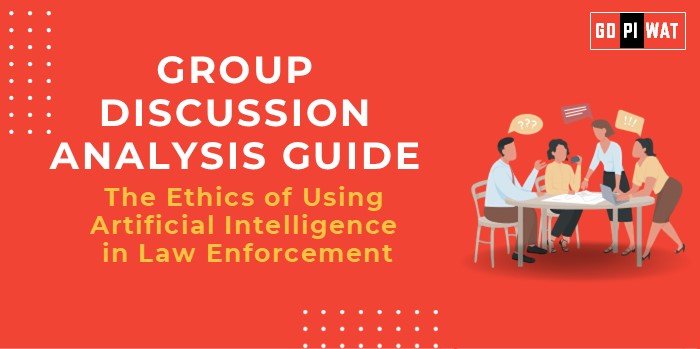📋 The Ethics of Using Artificial Intelligence in Law Enforcement
🌐 Introduction to the Topic
Opening Context: Artificial Intelligence (AI) is revolutionizing industries worldwide, including law enforcement. AI tools like facial recognition, predictive policing, and surveillance systems offer unprecedented capabilities but raise ethical concerns about privacy, bias, and accountability.
Topic Background: The integration of AI in law enforcement began with facial recognition and expanded to tools like predictive crime analysis. While these tools promise increased efficiency and safety, controversies around wrongful arrests, privacy intrusions, and systemic bias have sparked heated debates globally.
📊 Quick Facts and Key Statistics
- 🌍 Global AI Surveillance Use: Deployed in 75 countries (Carnegie Endowment, 2024) – Highlights the global scope and ethical implications.
- ⚠️ Bias in AI: 65% of facial recognition algorithms perform less accurately on minority groups (NIST, 2024) – Reflects potential ethical pitfalls.
- 💰 Economic Value: AI integration in policing expected to save $30 billion annually by 2030 (McKinsey, 2023) – Balances ethical concerns with cost-saving benefits.
- 📋 U.S. Case Study: 400+ arrests based on facial recognition by 2023, but 12% faced bias-based challenges – Underscores practical challenges in ethical AI deployment.
👥 Stakeholders and Their Roles
- 🏛️ Law Enforcement Agencies: Responsible for implementation and accountability.
- 📜 Governments: Tasked with regulation and oversight.
- 💻 Technology Firms: Responsible for designing unbiased algorithms.
- 👨👩👧👦 Citizens: Rights are affected; they advocate for transparency and fairness.
- 📢 Civil Society & NGOs: Monitor misuse and advocate for ethical AI use.
📚 Achievements and Challenges
Achievements:
- 🚀 Enhanced Efficiency: AI tools expedite investigations, e.g., solving cold cases through pattern recognition.
- 📉 Crime Prediction: Predictive policing reduced property crimes by 15% in pilot programs in the U.S.
- 📹 Surveillance Accuracy: Advanced analytics improve monitoring efficiency in high-crime areas.
Challenges:
- ⚠️ Bias in Algorithms: Discriminatory outcomes disproportionately affect minorities.
- 🔒 Privacy Concerns: Large-scale data collection challenges individual freedoms.
- 📋 Accountability Gaps: Difficult to assign responsibility for AI errors.
Global Comparisons:
- 🇨🇳 China: Extensive AI surveillance but criticized for authoritarian overreach.
- 🇪🇺 EU: Strict GDPR regulations ensure greater accountability in AI deployment.
Case Studies:
- 🇺🇸 Detroit, USA: Facial recognition led to multiple wrongful arrests.
- 🇬🇧 London, UK: Deployment halted over privacy lawsuits.
🗨️ Structured Arguments for Discussion
- ✅ Supporting Stance: “AI boosts law enforcement efficiency, reducing crime rates and enhancing public safety.”
- ❌ Opposing Stance: “AI systems in policing perpetuate systemic bias, undermining justice and fairness.”
- ⚖️ Balanced Perspective: “AI offers transformative benefits but requires strict ethical safeguards to prevent misuse.”
🌟 Effective Discussion Approaches
- 💡 Opening Approaches:
- 📊 Data-Driven: “75 countries use AI in policing, but ethical frameworks lag far behind technology.”
- 📘 Real-World Example: “The Detroit case highlights how biased AI can disrupt lives.”
- 💬 Counter-Argument Handling:
- “Acknowledging bias is the first step toward building fairer AI systems.”
- “Privacy concerns can be mitigated with anonymization and strict data governance.”
📈 Strategic Analysis of Strengths and Weaknesses
- ✅ Strengths: Efficiency, predictive capabilities, scalability.
- ⚠️ Weaknesses: Bias, lack of regulation, potential overreach.
- 🌟 Opportunities: Ethical AI advancements, global collaboration.
- ⚡ Threats: Public distrust, legal challenges, misuse by authoritarian regimes.
🎓 Connecting with B-School Applications
- 🌍 Real-World Applications: Topics in ethics, data governance, and technology policy.
- 💬 Sample Interview Questions:
- “Should AI be allowed in law enforcement without transparency measures?”
- “How would you design an ethical AI governance framework?”
- 📘 Insights for Students:
- Research on biases in decision-making algorithms.
- Explore consulting opportunities in AI governance and technology policy.


